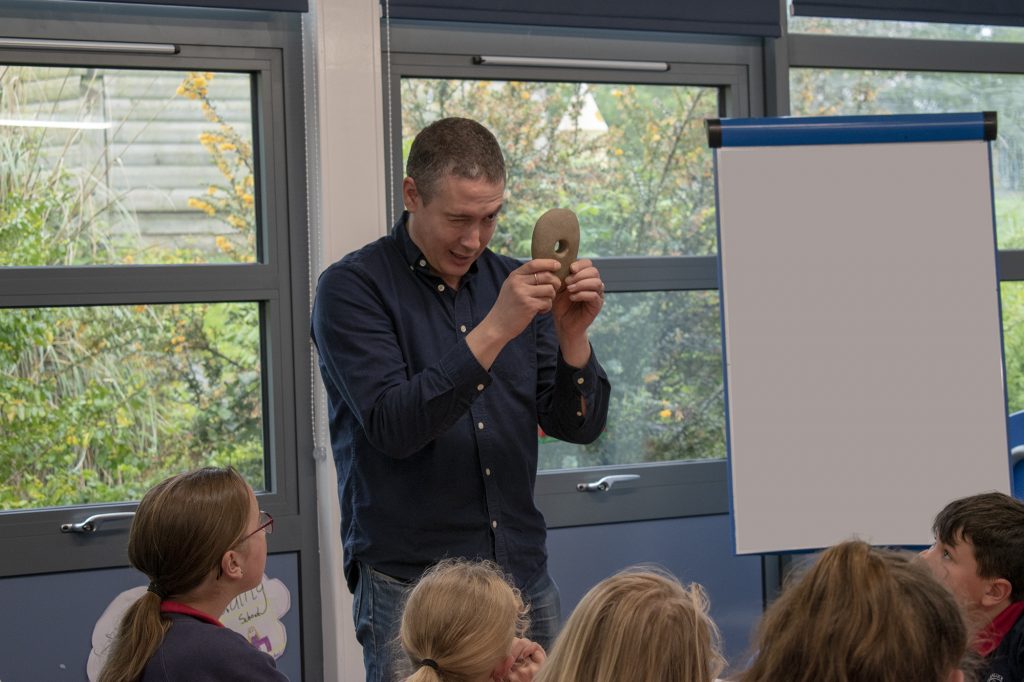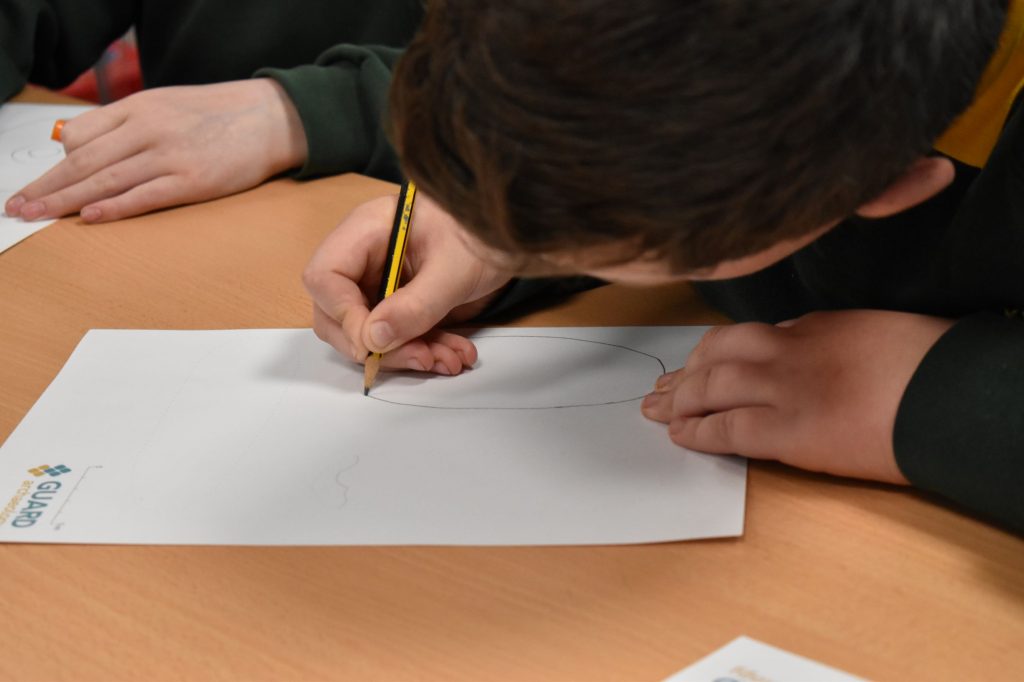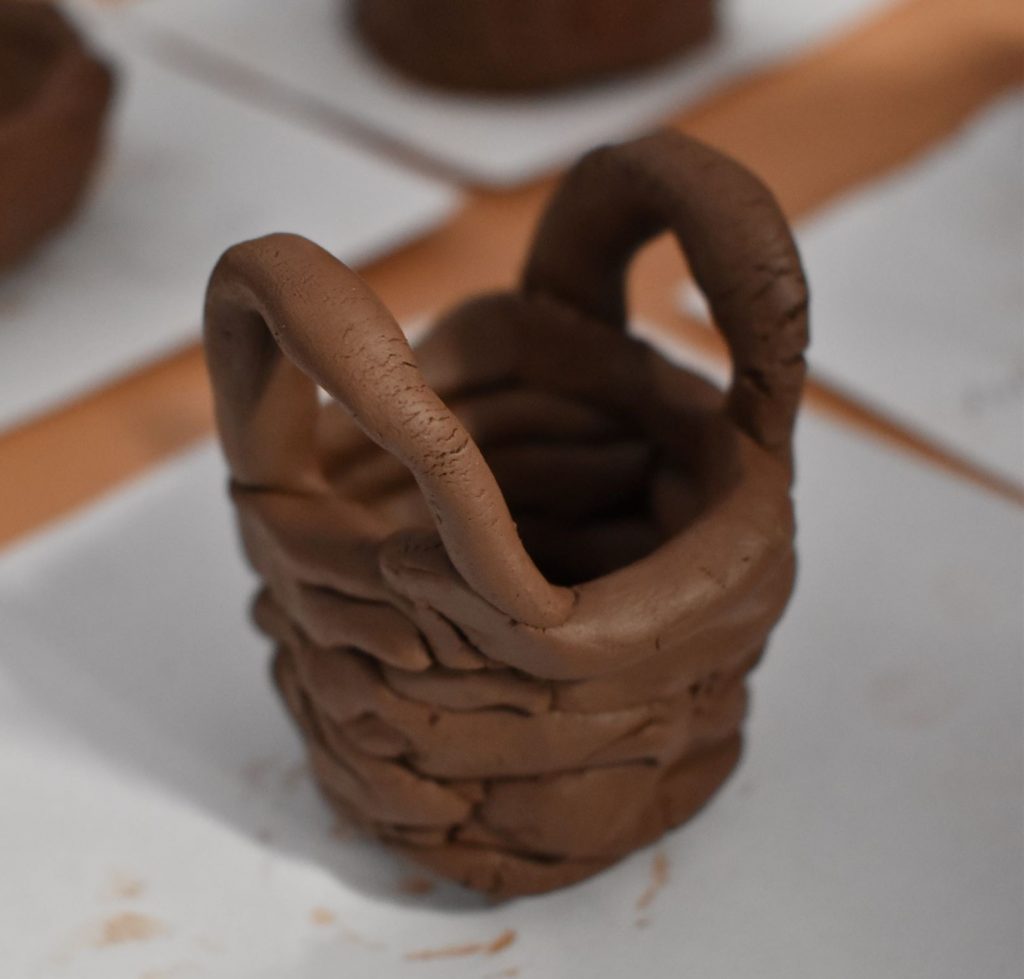
Communicating the results of our work to as wide an audience as possible is one of the key principles of GUARD Archaeology and accords with Scotland’s Archaeology Strategy. So, it was with great pleasure that a team of GUARD Archaeologists led an engagement event at Glenluce and Castle Kennedy Primary Schools on 30th April 2019.

There were 56 children from P5, P6 and P7 across both schools involved in clay modelling and paper craft activities led by GUARD Graphics Officers Gillian Sneddon and Jennifer Simonson. We took along one of the conserved pottery vessels and numerous stone tools from the excavations associated with the A75 Dunragit Bypass, to use in the activities.

One of the activities the children undertook was the paper recreation of the pot from cut-out paper fragments which were glued together to form the outline of the vessel. They also learned how to record notes on the pot – what it was made from, its decorative details and its age. They then coloured in the same pot adding their own take on the decoration. This was followed by clay modelling where the same children had to try to recreate the vessel using air-drying clay and modelling tools that may have been used for the original, such as twigs, cord, feathers etc. The children created some very individual-looking pots with their own personal touches.

James Ferguson, Acting Head Teacher at Glenluce and Castle Kennedy Primary Schools commented that, ‘The children really enjoyed the experience and were stimulated by the range of activities, which raised their awareness of the historical significance of their locality.’

‘This was a valuable opportunity to engage with the local school children and to teach them about the significant prehistoric archaeology discovered around Dunragit during the A75 bypass construction,’ added Warren Bailie, who is managing the programme of archaeological work. ‘The drawing and clay modelling were great ways for the kids to learn about the lifestyles of past communities who utilised this landscape thousands of years ago.’
